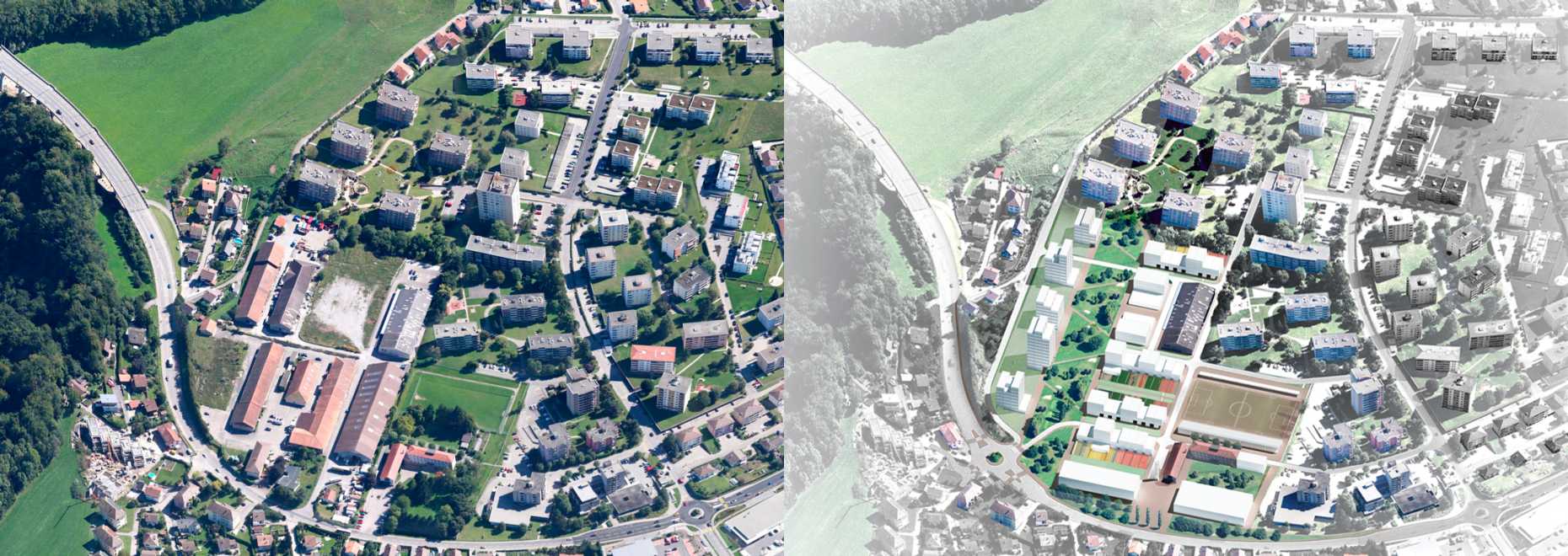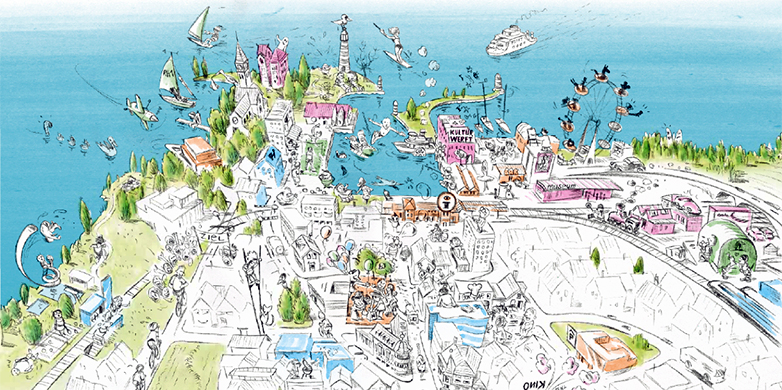What is the key to successful inward development?
The small and medium-sized municipalities own a large share of the settlement area reserves, but often lack sufficient resources and expertise to implement inward development. Successful settlement development requires both a spatial vision and a strategy; good examples can serve as a useful guide here.
According to the revised spatial planning law, urban areas must densify – by increasing the number of inhabitants and workers in existing built-up areas. At the same time, urban sprawl should be curbed. So how are municipalities to come up with effective urban development solutions that meet these demands?
Identifying the reserves
The first thing is to identify just where built-up areas can grow, and how large these reserves are. My Chair of Spatial Development has developed Raum+, a method that quantifies the reserves and, through meetings with municipality representatives, supplements this data with qualitative information, such as availability or owner interest. Over 380 municipalities and 12 cantons have already put Raum+ into practice. Broadly speaking, the method distinguishes between two types of reserves: developed and undeveloped.
The undeveloped reserves are building areas which have not yet been built on. Where these lie within an existing urban structure, we call them inner reserves; where they lie outside the urbanized area – at the edge of the town, for example – we call them outer reserves. Developed reserves, however, are always inner reserves. Examples of these would be industrial wasteland (“brownfields”) or buildings where, according to building regulations, there is provision for an additional floor [1].
In a study, we supplemented the reserves recorded by Raum+ with cantonal data and extrapolated this for the whole of Switzerland. The results suggest that the reserves for inward development are sufficient for an additional 0.7 to 1.4 million inhabitants, without needing to zone-in additional land for building [2].
Challenges ahead
Two-thirds of these reserves are in small and medium-sized municipalities of less than 10,000 inhabitants, which account for 90% of all Swiss municipalities. However, when municipalities want to use their settlement area reserves, they are often faced with major challenges. After all, inward development requires not only new approaches, but also considerable commitment and expertise – often more than is available to small and medium-sized municipalities. The experts concerned generally carry out their tasks on a part-time basis, and technical and financial resources are limited.
For these reasons, we devoted our conference on Inward development in Switzerland 2.0 to small and medium-sized municipalities, and we searched throughout Switzerland for successful inward development projects, to determine the key factors for success [3].
Ingredients for success
Common to all the good examples was that they:
- Have a clear idea of both desirable and undesirable future development.
- Follow a strategy which enables a flexible approach to limited resources and priorities to be set.
- Allow the municipal authorities to do preliminary work – in acquiring important real estate or carrying out planning processes that demonstrate the range of possible solutions, for example.
- Create real added value for the public, such as upgraded open spaces, clever transport solutions, favourable conditions for innovative business and attractive housing.
- Clearly communicate these services to citizens, in order to increase acceptance.
Learning from examples
We documented three particularly noteworthy examples in films: In external page Romanshorn (TG), we show how the introduction of an office dedicated specifically to town development led to a solid strategy for the entire town and how, on this basis, the harbour was opened up to the population. In external page Manno (TI), the historical centre of the town was extensively enhanced, which turned the long-standing tide of depopulation. Over the next few years in external page Marly (FR), two large disused industrial areas will be converted into innovative working and residential areas and new transport concepts will be tested.

Bernd Scholl compiled this article with Giovanni Di Carlo, Roman Streit and Karin Hollenstein.
Further information
You can view the three films on the Chair of Spatial Planning external page YouTube channel, or watch the external page Schweiz Aktuell coverage of the films and the conference (at 8:34 mins).
[1] Find information on Raum+ and the results of the cantonal surveys here.
[2] In the second half of the year, the study will be uploaded to the Chair of Spatial Planning website.
[3] Documents, presentations and lectures from the conference can be found here.


Comments
No comments yet